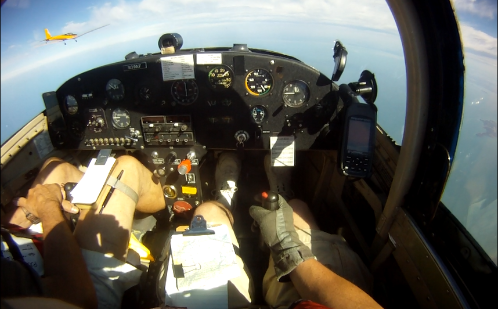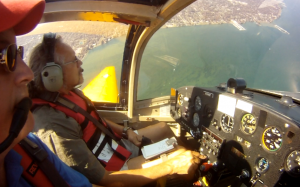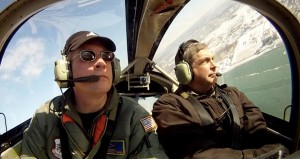I spent the afternoon and part of the early evening packing and then heading to Lost Nation Airport at Willoughby, Ohio for the Gathering of Eagles airshow. Team Tuskegee is flying the show with its three-ship TG-7A demo. No T-6G this time. It’s just the longwings.
I remain without a FAST card and the team’s airshow routine is now all formation all of the time, so I’m here as a ferry pilot and as team narrator. I flew here, adding another couple of hours, more or less, of stationkeeping and keeping the formation skillset current. And I’ll fly media or liaison flights as needed.
We’re quickly approaching the point where I think there’ll be a checkride opportunity so that I and the team’s long-suffering FNG (whom I don’t pre-date by much) can get our wingman cards and expand the number of show-capable personnel (and – for that matter – the number of FAST-card-holding glider drivers in the world) to five.
The demo is really shaping up. I handed over the controls to John over the Pointes for a run-through before heading to Willoughby and got to see the demo again from the No. 3 ship. I’ve also flown 2 in three separate demos at higher altitudes for River Days. So I’m doing everything I can to be show ready. Probably just in time for the show season to end, but you never know. And next year isn’t that far off.
And it’s worth getting the formal formation qualification. We do so much more in the box in formation and it looks so much more compelling that the old demo. And the leapfrog landing (in which lead lands first, followed by 2 and 3, each landing over the preceding aircraft) is really compelling. It looks like snakes mating. But it’s utterly structured and we’ve gone to great lengths in the briefs and in practice to make it safe.
If you’ll be near Willoughby this weekend, get out to the airshow. I’ll be wantering the grounds and getting on the mic and I’ll hope to see you there!








